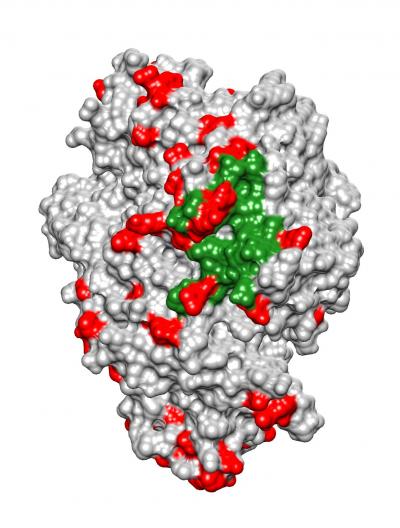Scientists have always known of the impact that viral pathogens have had on Homo sapiens evolution. Remnants of viral DNA can found dispersed throughout the human genome, but until recently scientists have not had the tools to look at how the influence of viruses has spread globally across species and genomes. Now, a new study by researchers at Stanford University applies big-data analysis to reveal the full extent of viruses’ impact on the evolution of humans and other mammals.
Astonishingly, the new findings suggest that 30% of all protein adaptations since humans’ divergence with chimpanzees have been driven by viruses.
“When you have a pandemic or an epidemic at some point in evolution, the population that is targeted by the virus either adapts or goes extinct. We knew that, but what really surprised us is the strength and clarity of the pattern we found,” explained lead study author David Enard, Ph.D., a postdoctoral fellow at Stanford University. “This is the first time that viruses have been shown to have such a strong impact on adaptation.”
The findings from this study were published recently in eLife through an article entitled “Viruses Are a Dominant Driver of Protein Adaptation in Mammals.”
Proteins are the business end of our genetic code and perform a vast array of functions that keep cellular functions moving. By revealing how small tweaks in protein shape and composition have helped humans and other mammals respond to viruses, this new study could help researchers find new therapeutic leads against today’s viral threats.
“We’re learning which parts of the cell have been used to fight viruses in the past, presumably without detrimental effects on the organism,” noted senior study author, Dmitri Petrov, Ph.D., professor of biology and associate chair of the biology department at Stanford. “That should give us an insight on the pressure points and help us find proteins to investigate for new therapies.”
Work done previously on the interactions between viruses and proteins had focused almost exclusively on individual proteins that are directly involved in the immune response—the most logical place you would expect to find adaptations driven by viruses. This is the first study to take a global look at all types of proteins.
“The big advancement here is that it’s not only very specialized immune proteins that adapt against viruses,” remarked Dr. Enard. “Pretty much any type of protein that comes into contact with viruses can participate in the adaptation against viruses. It turns out that there is at least as much adaptation outside of the immune response as within it.”
The investigators looked to identify all the proteins that are known to physically interact with viruses—settling on a list of 1300 proteins of interest. Concomitantly, the researchers developed big-data algorithms to scour genomic databases and compare the evolution of virus-interacting proteins to that of other proteins. The results revealed to the Stanford team that adaptations have occurred three times as frequently in virus-interacting proteins compared with other proteins.
“We’re all interested in how it is that we and other organisms have evolved, and in the pressures that made us what we are,” Dr. Petrov stated. “The discovery that this constant battle with viruses has shaped us in every aspect—not just the few proteins that fight infections, but everything—is profound. All organisms have been living with viruses for billions of years; this work shows that those interactions have affected every part of the cell.”
Since viruses hijack nearly every function of a host organism’s cells to replicate and spread, it makes sense that they would drive the evolution of the cellular machinery to a greater extent than other evolutionary pressures such as predation or environmental conditions. This study sheds light on some longstanding biological conundrums, such as why closely related species have evolved different machinery to perform identical cellular functions, like DNA replication or the production of membranes. Researchers previously did not know what evolutionary force could have caused such changes. “This paper is the first with data that is large enough and clean enough to explain a lot of these puzzles in one fell swoop,” said Dr. Petrov.
The Stanford team was excited by their findings and is now using the knowledge to dig deeper into past viral epidemics, hoping for insights to help fight disease today. For example, human immunodeficiency virus (HIV)-like viruses have swept through the populations of our ancestors as well as other animal species at multiple points throughout evolutionary history. Looking at the effects of such viruses on distinct populations could yield a new understanding of our constant war with viruses.




Comments are closed.